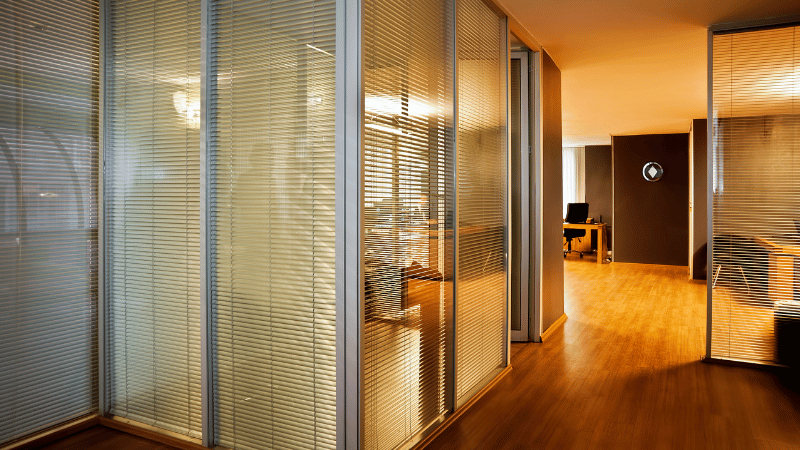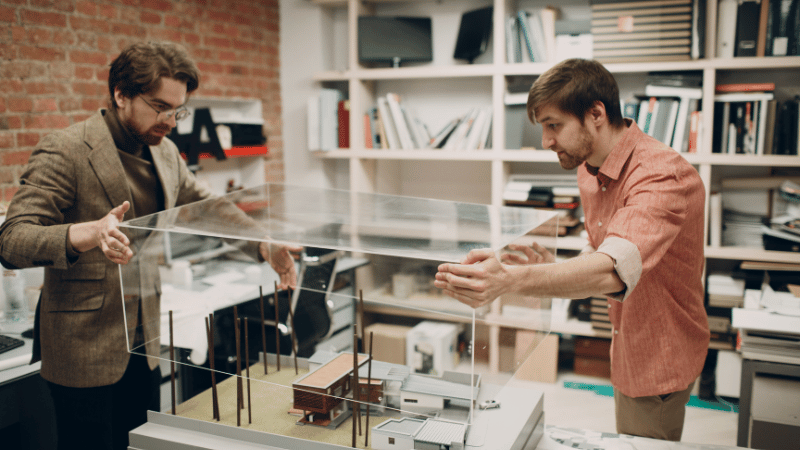
How to Soundproof Your Office Space
How to Soundproof Your Office Space
Written by Chicago Office Movers on . Posted in Office Renovation

A noisy workplace filled with chatty coworkers, running equipment, and squeaky chairs can make focusing on tasks difficult. The solution is to soundproof the office space. A noise-free professional work environment improves employee productivity. Here’s how to introduce soundproofing to the office.
Is workplace noise a concern?
The typical office is staffed with numerous employees, the outcome of which is a noisy environment. When sound is an issue, distractions abound and clear communication is absent. As a result, office staff feel frustrated and less productive; plus, their mental or physical health can be affected.
Research finds that 30 percent of staff working in cubicles are dissatisfied with the level of noise in their immediate workspace. An open work area is no less conducive to sound privacy. Although an open floor plan encourages collaboration, excess sounds are a major workplace concern.
What are soundproofing strategies?
1. Play White Noise
Playing a steady stream of static noise drowns out the cacophony of sounds in the office. White noise machines can be distributed to staff; alternately, place one in the center of the office. These machines work by providing auditory stimulation, thereby preventing listeners from noticing other noises.
2. Adjust Cubicles
In offices that feature cubicles, adjustments can be made to block out excess sounds. Increase the distance between cubicles so that sounds don’t reach the staff. Or, increase cubicle wall heights by installing taller partitions made of polyester fiber or insulated glass.
3. Switch the Flooring
Hard flooring reflects the most sound, from rolling chairs to employees dropping items. Reduce the amount of sound from the floor by installing carpets with soundproofing underlay. Soft material dampens sound, especially in instances when foot traffic causes the most noise.
4. Install Soundproofing Insulation
Control sound by insulating the office walls with soundproofing insulation. This material deflects noise coming from outside the building as well as impact sounds, such as when a chair collides with the wall. Use thicker insulation to keep out louder noises—while also increasing the office’s energy efficiency.
5. Offer Sound Blankets
While adding soundproofing installation takes time, an immediate fix is to hang soundproof blankets made of thick cotton or polyester over the cubicle walls. This tactic is an easy way to create a noise buffer between bothersome sounds and an employee’s workspace.
6. Add Acoustic Panels or Tiles
Acoustic panels made of compressed mineral wool or foam decrease noise by absorbing, rather than reflecting, sound waves. Sounds in the office are converted to kinetic energy that dissipates, thereby reducing a significant amount of noise. Acoustic ceiling tiles are likewise effective, but pricey.

7. Bring in Plants
Thick with branches, junipers and hollies effectively block noise. Place plants close together to create a sound-absorbent “wall.” Hanging plants absorb sound reverberations. Plants with dense vegetation not only keep out extraneous sounds but improve the look of the office and enhance its air quality.
8. Build Private Meeting Rooms
Reduce noise in parts of the office to give employees privacy to conduct meetings. Frameless glass partition panels that extend from the floor to the ceiling create spaces that offer flexibility and privacy. A quiet room is ideal for employees who want a retreat to focus on work.
9. Add Furniture to Areas with the Most Sound
Furniture absorbs and reflects noise, especially when the upholstered sofas, ottomans, and chairs are made of plush, sound-absorbing fabrics. Microfiber, suede, chenille, and corduroy materials are effective sound barriers. Curtains and tapestry stop sound waves and offer similar sound-reducing benefits.
10. Change the Office Layout
A thoughtful office layout can cut down on noise. Position the noisy equipment, such as fax machines and copiers, at the far end of the office to limit the amount of distracting sounds that reach employees hard at work. Or place the machines in a different room altogether.
11. Offer Noise-Canceling Headphones
Reducing the level of noise in the office is also doable at the staff level. Offer noise-canceling headphones, which operate by neutralizing low-frequency sounds before they reach the employees’ ears. These gadgets are especially suitable for colleagues working in open-plan office areas.
12. Install Office Partitions
Similar to acoustic panels, office partitions absorb noise by converting sound energy into heat that disperses. Place the partitions strategically; being unattached to the walls, they can be moved around to wherever additional soundproofing is necessary. Plus, they add visual privacy for employees.
13. Implement an Office Noise Policy
Cut down on excess noise by enforcing an office noise policy. The document should account for meetings and conversations between coworkers. For instance, ask that the break room door remain shut to prevent staff members on break from disturbing working employees.
Noise is a common complaint in office spaces. Reduce noise in the work environment by utilizing any combination of the abovementioned tactics. If your current office is far from ideal, you may wish to relocate. Chicago Office Movers can help you move and settle into a more suitable office space.
We are a reputable commercial mover with years of relocating local companies to greener pastures. Our move specialists are available to handle all phases of the move, from planning to packing and unpacking. Moving crews safely handle electronics, IT systems, artwork, office furniture, cubicles, and more.
Even the most delicate of office goods remain protected in our trucks, which feature climate-controlled spaces, lift gates, and air-ride suspensions. We also offer secure short- and long-term storage options, insurance and service contracts, add-on services, and convenient paperwork storage.
Companies place full trust in the moving crews at Chicago Office Movers, who are background-checked, licensed, and experienced. Along with a track record of delivering exceptional customer service, we offer affordable corporate relocation packages that satisfy businesses working within a budget.
Enjoy minimal disruptions to your company’s workflow when you choose Chicago Office Movers for an upcoming office relocation. We’re available to move your business locally, long-distance, or internationally.
Call our Chicago, Illinois, location at 312-244-2246 (CHI-CAGO) or fill out a form for a free estimate.
Contact Us
Related Services
- Corporate Moving
- Commercial Moving
- Reliable Commercial Storage
- Specialty Commercial Moving
- Furniture Assembly
- Movers for Office Renovation
- Machinery Moving
- Library Moving
- Lab Moving
- Server Room Moving
- Office Movers in Rosemont, IL
- Commercial Moving in Bolingbrook, IL
- Commercial Movers in Naperville, IL
- Commercial Movers in Des Plaines, IL
- Commercial Moving Services in Aurora, IL
- Schaumburg Office Movers
- Commercial Moving Services in Oakbrook, IL
- Commercial Movers in The North Shore
- Elk Grove Village Commercial Movers
- Furniture, Fixtures and Equipment Services
- Moving Company in Lincolnshire, IL
- Professional Movers in Downers Grove, IL
- Moving Company in Chicago, IL














